‘Power sharing’ in philanthropy: An empty buzzword, or can it work?
In this Devex article, the text of which is shared below, Darley and Bridget share insights about how trust plays a key role in power sharing effectively.

Read the full article here.
By Stephanie Beasley // 03 May 2023
New generations of donors are keen to bring more equity into their grantmaking process and share power with the marginalized communities they seek to help. Experts discuss how they might do that.
Among philanthropic organizations and individual donors, there has been widespread adoption of so-called power-sharing strategies that aim to include nonprofits in decisions about how to steer grant funding. A slight spike in unrestricted donations that grantees can spend any way they choose — largely thanks to billionaire philanthropist MacKenzie Scott — is also allowing more nonprofits to decide how to spend the grants without interference from funders.
Most of these changes are bundled under the banner of trust-based philanthropy, an approach that “reimagines the relationships between donors, nonprofits and communities to rebalance power and decision making,” according to the National Philanthropic Trust, or NPT, a U.S.-based grantmaking institution.
Power sharing, which falls within the philosophy of trust-based giving, also has become a buzzword as part of the quest to increase practices that promote equity. But there are questions about whether it can be successfully implemented when the reality is that the funder has the most critical resource on their side: money. Grantees also worry that foundations and other donors might not be willing to put in the work to build trust with nonprofit and community partners.
Where ‘trust-based philanthropy’ originated
Scott has brought the most attention to the trust-based giving movement. Scott, who was previously married to Amazon founder Jeff Bezos, has rapidly given away more than $14 billion in unrestricted grants in recent years. She has said that “it would be better if disproportionate wealth were not concentrated in a small number of hands, and that the solutions are best designed and implemented by others.”
She has focused her giving on organizations led by women and other underrepresented groups, as well as those working on equity and human rights.
While Scott has helped usher trust-based giving into the mainstream, the idea didn’t start with her. It is the “outcome of years of debate within the world of philanthropy between donors, nonprofits, activists and academics,” NPT said.
“The whole idea of who gets to decide how the money is used, what restrictions does the donor place on it, we’ve been talking about that issue for decades,” Elizabeth Dale, an associate professor of nonprofit leadership at Seattle University, told Devex.
In the U.S., those conversations about power sharing within philanthropy largely emerged in the 1970s as an outgrowth of the Civil Rights Movement and the women’s and LGBTQ rights movements, which all centered on equity, she said.
One challenge is that the working concept of “trust” within the sector assumes that it should flow in just one direction: From the funder to the nonprofit, said Darley Tom, who leads business operations and strategy for the Maverick Collective, a donor collaborative co-founded by Melinda French Gates.
“People talk about trust a lot, and I think the thing that people think is that the donor needs to learn to trust the organization,” Tom said. “But guess what? It’s also the other way too.”
Grantees should feel comfortable enough with funders to show them “the good, the bad and the ugly” of their work as well as what they have found to be “the hardest things about working with donors,” she said.
Maverick Collective allows women philanthropists to pool their funds to tackle global health and reproductive rights issues. A goal of the group is to help its members learn how to build “intimacy and trust” with organizations on the ground that they’re funding, Tom told Devex in an interview.
“I don’t think this is inherently an easy thing to do,” she said. Maverick Collective provides guidance on building more equitable relationships between donors and grantees.
The group recently released a framework for “more impactful philanthropy” that promoted increasing equity through power sharing.
“You have to be conscious as a funder how you’re showing up in that relationship and the language you’re using,” Bridget Hanagan, Maverick Collective’s manager of philanthropic partnerships, said during a presentation of the framework at the All In, All Rise Symposium for women in philanthropy that was held in Chicago in March.
When meeting with nonprofits and community members, funders can ask more questions instead of making statements that “might be seen as directions,” Hanagan said.
Funders also should hold themselves accountable to the organizations they support by being honest about how they are making decisions and making sure those decisions are based on “what will have the most impact” rather than what the donors want, she also suggested.
The most eager adopters
Women and younger donors have been among the biggest supporters of trust-based philanthropy, often due to their own experiences with discrimination or increased awareness of social inequalities, Dale told Devex.
Dale co-authored a report that showed high-net-worth U.S. donors born roughly between 1981 and 2010 — generations that tend to be more racially and ethnically diverse — were more likely to identify as queer, non-binary, transgender and/or wanted to be “allied with people who have been marginalized.”
“One of the things that this group of donors is really interested in is both shifting and sharing power, and they recognize that they hold, perhaps, more resources than the average person, and they’ve benefited from wealth and class privilege,” she said.
At the same time, these younger donors recognize that they might not be best suited to lead the equity work they support, she said. Her research showed that many young donors tried to resolve this issue by giving to intermediary groups and community organizations that already are connected to grassroots groups and can determine how to make the most impact with the funding.
It’s a strategy that more donors should employ if they actually want to share power with nonprofits and communities, said Monique Couvson, president and CEO of Grantmakers for Girls of Color, or G4GC.
It’s important for philanthropy to “start really interrogating its own practices around the distribution and stewarding of dollars,” she said.
While unrestricted dollars are “absolutely a very powerful tool” that philanthropic organizations have to share power, there also is “something to be said, within reason, for communities to be involved in the decision-making processes associated with distribution of funds,” Couvson said.
G4GC is an intermediary group that helps to steer grant dollars from donors to grassroots and local organizations that support or are led by non-white “girls, femmes, and gender-expansive youth” under the age of 25 within the U.S.
G4GC was initially launched in 2015 by the NoVo Foundation and other partners as an online platform and funder network. In 2019, it became an independent entity that is managed by Rockefeller Philanthropy Advisors. The group has “moved” $25 million to groups across the U.S. within its first three years of independence because “we had relationships with communities” and “people trusted us,” Couvson said.
She attributes much of that trust to G4GC’s inclusion of young people in decisions about where and how grant funding should be spent within their communities, Couvson told Devex.
G4GC staff perform their due diligence in ensuring all the organizations their youth committee reviews meet basic requirements for receiving funding and resources, but “the final decision about who is resourced, largely rests with girls, femmes and gender expansive youth in those spaces,” Couvson said. G4GC pays the young people for their role in decision-making, she said.
Couvson also attended the All In, All Rise Symposium, where she encouraged funders to consider adopting similar participatory grantmaking approaches to increase engagement and connection with the communities that they seek to help.
There are multiple strategies, and “I would caution against us thinking that there is only one way to achieve this shift in power and sharing of power,” she told Devex.
Even family foundations, whose circle of decision-makers tends to be restricted to family members, can explore relationships with intermediaries such as G4GC that have “relationships on the ground” in an effort to make their grantmaking more participatory, Couvson said.
Some family foundations are finding ways to create more of those kinds of partnerships, Dale said. She said some of the people she interviewed for her research on younger donors also were part of family foundations that had “done some different things to really share power,” such as hiring a non-family member to serve as executive director.
And sometimes that person was empowered to convene a group of community members to make grantmaking recommendations for the family to approve.
“So, I think it is happening,” she said. “I think it’s still certainly a minority of the giving that’s occurring.”
